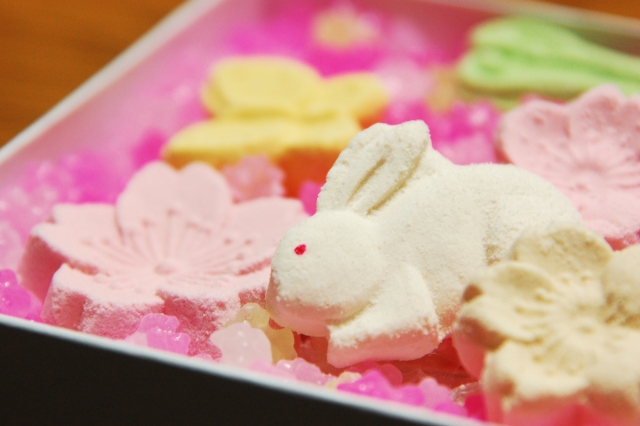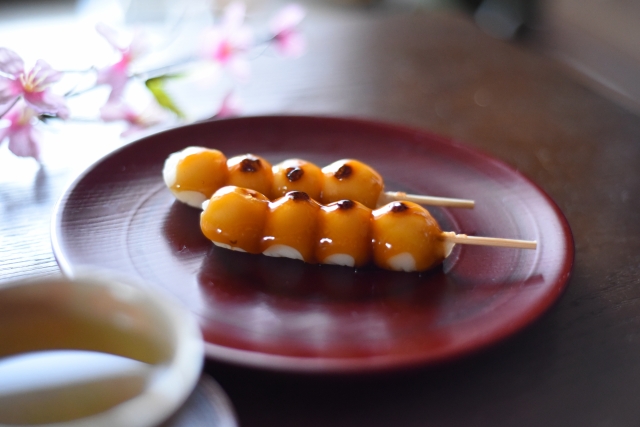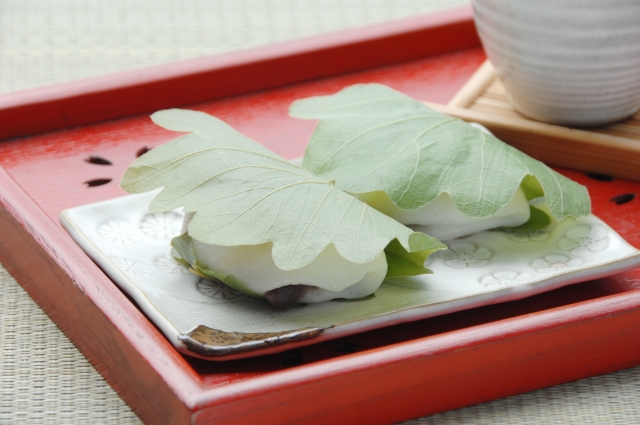Ever been treated to a full-course Japanese dinner at a posh restaurant, only to be mildly disappointed at the end by being served melon as dessert? Where’s the pudding, where’s the famous WAGASHI, or Japanese sweets, you think. Well, that was my thought after my first experience at a classic Japanese restaurant, shortly after I’d started working in Tokyo. Yet again I also thought: all those family luncheons and dinners with our relatives during seasonal celebrations only served fruit at the end. Why not cake? Fruit is for breakfast, isn’t it?
One of the reasons classic Japanese cuisine doesn’t have a dessert menu, some say, is because Japanese cuisine uses sugar to season the dishes. Not only is sugar used, a seasoning called MIRIN, which is a sweet cooking wine, is also often used. Moreover, in Japanese cuisine, rice is served at the end of the meal with miso soup or clear soup, which is the exact opposite of most western cuisines, where bread and soup appear towards the beginning of the meal. Hence after a full-course meal seasoned with sugar and finished off with a bowl full of sweet carbohydrates, it is more fitting to serve something light and easy to digest, like fruit.
This is the exact opposite of western cuisine, where after the bread (or pasta, risotto, or paella), you deprive your system of sugars, perhaps with the exception of what comes in the alcohol. By the time you’ve finished your filet mignon, your body craves for that sweet punch; where the pie, the cheese cake, or the chocolate decadence, nicely slides in.
So, there is a reason for serving the fruit “in season”, or as we say in Japanese, “SHUN”. Japanese people are fanatic about anything that is “in season”. But then, where did WAGASHI, Japanese sweets, come from?
There are broadly two groups of Japanese sweets; one that has its origins in the casual tea house, such as the DANGO, serving as an equivalent to the English afternoon tea to fill in the space between meals; the other, that has its roots in the sweets brought back by the Buddhist monks who studied in China, more than a thousand years ago.
In ancient times when food was not as abundant as it is today, people filled their stomachs in between meals with fruit, such as chestnuts and persimmons, which are native to the Japanese isles. Lacking the technology to process food, such fruits were precious sources of sweetness, and valued as special treats. As food processing technologies developed, people were able to grind acorns and other tree nuts to produce powder, that was then rolled into balls and steamed. These steamed balls of tree nut powder are said to be the origins of DANGO. DANGO today is made from sweet rice powder, and like everything else in Japan, it’s available with a myriad of toppings, from the more traditional AZUKI sweet bean paste, the MITARASHI sweet soy sauce dip, to a cherry blossom paste during cherry blossom season (or when it is “SHUN”).

Perhaps the most interesting feature of this type of WAGASHI is how they always represent the season, or the “SHUN” in their flavor and design. The design could represent the nature at the time of the year, or a festival. For example, the UGUISU (Japanese bush warbler) bird or the TSUBAKI (camellia) flower in February, the SAKURA (cherry) blossoms in April, the AYU (young sweetfish) in June, and the Japanese chestnut in September or the maple leaf in October all represent the nature of the seasons. On the other hand, the KASHIWA (Japanese emperor oak) in May represents the Boy’s Festival, since the emperor oak does not shed its leaves until the tree buds comes out, a sign of prosperity for the family. These days, it is not uncommon to see WAGASHI themed around western events such as Halloween.
Next time you are in Japan, visit the famous DEPACHIKA (Department Store Basement Floor) where the food section is, to see and purchase the different WAGASHI available. Follow your heart and indulge; you’ll be guaranteed a glimpse into how the Japanese view the seasons, with an added benefit of a satisfying palate.

The other realm of Japanese sweets is perhaps the less filling but more appealing to both the eye and palate, and perhaps viewed as the classic realm of WAGASHI. Represented by OMOGASHI or the main sweets in traditional tea ceremony which are usually fresh, and HIGASHI, which are usually dry, served towards the end of traditional tea ceremony with weaker tea, both embody everything that is Japanese: the look, the taste, and the size.
One of the origins of this type of WAGASHI is said to be KARAGASHI (meaning “sweets from China or abroad”); small biscuits used in religious ceremonies, brought back by the KENTOSHI monks who had travelled to China between the seventh to ninth centuries. There are eight main shapes in KARAGASHI, and some of these designs have transitioned to the designs of WAGASHI sweets. After the custom of drinking tea was imported from China, it was not until the EDO period in the seventeenth century that the culture of WAGASHI finally blossomed. The stable EDO government provided long periods of peace, during which the WAGASHI culture flourished, with distinct developments by region.

